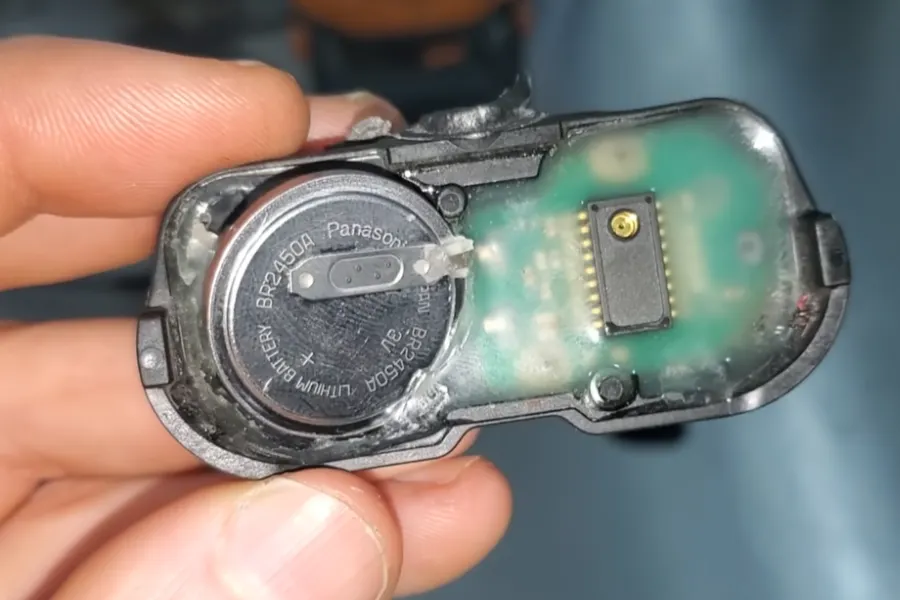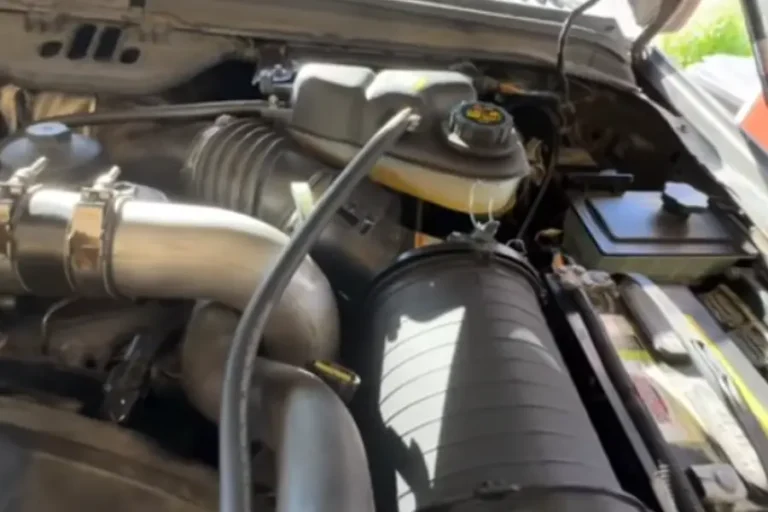Why Is Your Honda Civic Tire Pressure Low? [Causes & Fixes!]
Like many Civic owners, I have encountered a flashing TPMS light multiple times. It looks like the signal for an impending doom. Even when I know everything is okay, that light just won’t let me drive in peace.
The blinking TPMS light usually indicates honda civic tire pressure low. However, high tire pressure can also trigger the light. Other reasons include faulty TPMS sensors and control units.
Your TPMS light is there to save your vehicle. Although, a malfunctioning light can be quite an inconvenience. However, you can easily resolve the situation with a few simple adjustments.
Let me tell you what worked for me.
What It Means When The Honda Civic TPMS Light Is Flashing

The Honda Civic TPMS stands for Tire Pressure Monitoring System. Its job is to monitor the vehicle’s tire pressure and alert the driver when it’s too low or high. Therefore, a flashing TPMS indicates improper Honda Civic tire pressure.
The TPMS light is a safety feature for your car. By alerting you about the wrong tire pressure, the system helps you avoid several problems. These include excessive tread wear or a blowout in the middle of the road.
In a direct TPMS, sensors are installed on your car’s wheels. The TPMS collects information from these sensors and triggers the light when the measurements are off. Meanwhile, indirect TPMS will measure the wheel’s speed using the ABS.
troubleshooting guide for Honda Civic Tire Pressure Low
A flashing TPMS light in your Honda Civic can be pretty distracting. You wouldn’t be able to focus on the road as you keep thinking, what’s wrong? So, let’s learn in-depth about the causes and how to fix them.
1. Tire Pressure Too Low or High
The primary purpose of the TPMS is to monitor tire pressure. So, if you have significantly low or high pressure in your tires, the alarm will go off.
There are multiple reasons for low tire pressure. These include-
- A slow leak from old tires
- Punctures in tires from road debris
- Cracks in the tire
- Damage to the valve stem
- Changes in temperature or altitude
However, low tire pressure isn’t the only reason for a flashing TPMS light. It can also happen if your tire pressure is too high. Reasons for high pressure are-
- Overinflation when filling the tires
- Sudden rise in temperature
- Altitude change
Potential Fix:
If you suspect a low or high tire pressure, you need to correct it. Otherwise, the light will keep flashing. Plus, you will be at risk of an accident. Check the pressure first and then make the necessary adjustments-
- Step 1: Choose a tire and remove its valve cap. Place a tire pressure gauge in the valve stem and press down. You will get a reading for the tire pressure in PSI.
- Step 2: Compare this reading with Honda’s recommended tire pressure (32 PSI) to check if it’s low or high. Do the test for all the tires.
- Step 3: Insert an Air Compressor’s hose into the valve system for underinflated tires. Press the lever to refill. Check again with the gauge to ensure proper pressure levels.
- Step 4: Press the small pin inside the valve stem if you have an overinflated tire. This will release some of the air. Check with the gauge to ensure you have reached the proper levels.
- Step 5: Tighten the valve caps properly and drive your car for a few minutes. Hopefully, the TPMS light has stopped flashing.
You can find a decent Tire Pressure Gauge for around $10 on Amazon or any auto parts store. An Air Compressor starts from $20. Getting your tire pressure professionally checked can cost $10-30 per tire.
Read also > The reason behind your Honda TPMS Light On But Tires Are Fine
2. TPMS sensor Failure

Is your TPMS light still flashing after filling the tires? In that case, the problem might be in the sensors.
The TPMS uses these sensors to read the condition of the wheels. A faulty sensor will give false readings. And so, the light wouldn’t stop flashing.
Your Honda Civic’s TPMS sensors might be malfunctioning for several reasons-
- Corrosion has messed up the sensor’s wiring.
- Impact, stress or bad installation has damaged the sensor
- Electromagnetic interference
- Incompatible with the tires.
Probable Fix:
To solve the problem, you have to access the TPMS sensor and put in a new one. It can be a DIY job if you have prior experience with such repairs.
- Step 1: Connect a TPMS Scan Tool to your car’s OBD port. Follow the instructions on the tools’ screen to trigger the sensors.
- Step 2: Compare information from the tool and your observation to detect the faulty sensor’s location.
- Step 3: Remove the tire and wheel assembly of the affected side. This will give you access to the TPMS sensor. Its usual position is on the valve stem.
- Step 4: Disconnect the sensor from the car and put the new one in its place. Ensure that it matches your Honda Civic’s specifications.
- Step 5: Tighten the sensor’s position on the valve stem with appropriate torque.
- Step 6: Put your tire back. Needless to say, you should inflate it to 32 psi.
- Step 7: You have to register the new sensor ID. So, do a TPMS relearn (YouTube link).
A new TPMS sensor costs between $50 and $200. The prices vary according to model and year.
However, detecting, replacing and relearning the TPMS sensor is fairly complicated. Unless you are an expert, it’s wise to seek professional help. The average labor charge for a full replacement is around $30-50/tire.
3. TPMS Control Unit Failure

The TPMS control unit receives and acts upon the sensors’ signals. A faulty control unit will flash the TPMS even when your Civic’s tire pressure is okay.
Adjusting the pressure or replacing the sensor is useless in this case. There are a few reasons for a TPMS control going bad-
- Water, heat or impact has destroyed the unit
- Virus or software glitches have scrambled the TPMS codes
- Improperly configured unit.
- TPMS CU is not updated
- The control unit isn’t compatible with the TPMS sensors.
Probable Fix:
You might be able to fix the glitches in your TPMS with the scan tool. Otherwise, a replacement will be your only option-
- Step 1: Check for trouble codes related to Honda Civic TPMS CU failure. You can expect DTC 81, 83 and 85 on your tool.
- Step 2: Clear the code and check if the light still persists. Flashing that results from minor glitches usually resolves after clearing the codes.
- Step 3: If you still have the flashing TPMS light, you probably need to replace the CU. You will find the module at the back of the left front wheel well.
- Step 4: Remove the damaged unit and install a new TPMS CU. Properly connect the wiring harness. Ensure that TPMS CU abides by Honda’s specs.
- Step 5: Carry out a TPMS relearn to calibrate the new unit with the system.
A new TPMS control unit costs around $150. Labor costs for the replacement are $35-45.
Read also: Toyota Camry Tire Pressure Light Blinking
How To Avoid Honda Civic Tire Pressure Light Blinking Problem?
The blinking Honda Civic tire pressure light can be quite a menace. Firstly, it irritates you. Moreover, the inspection can cost you time, effort and money. So, here are a few things I have found to help me avoid this situation-
- Keep the tires inflated at the recommended pressure level
- Always relearn the TPMS after installing new tires
- Update the TPMS control unit regularly
- Ensure the battery and connections are okay.
- Treat a TPMS trouble code as soon as possible.
Is It Okay To Drive Honda Civic With Tire Pressure Light On?
You should not drive your Honda Civic when the tire pressure light is blinking. Not unless you have solved the reason for the light.
Usually, the light comes on when the tire is over or under inflated. Driving under such conditions puts you at risk of a blowout on the highway. Plus, improper inflation can stress the tires and cause premature tread wear.
You can drive with the blinking light once you ensure the tire pressure is okay. However, you must fix the TPMS light as soon as possible. Otherwise, you won’t be able to tell when the tire pressure is low for real.
Read also: Why Does My Audi’s Tire Pressure Light Keep Coming On?
Honda Civic Tire Pressure Low (FAQs)
Hopefully, you found the answers to your queries regarding your Civic’s TPMS light and tire pressure. Have some more questions? Ask here-
If your TPMS sensor and CU are alright, the issue might be overinflation. In the morning, the air inside the tire is cold and compressed. As the day gets hotter, the air expands and increases pressure. So, the light comes on.
Honda Civics from 2014-2020 has an indirect TPMS system. You can calibrate it from the vehicle’s settings menu. Find the TPMS calibration option and click on it.
Consider the valve stem if a new tire, sensor and control unit doesn’t solve your problem. It’s a tube that sticks out from the wheel and lets air enter the tire. If the stem is cracked or leaking, you will experience low pressure.
Certification: BSc in Mechanical Engineering
Education: Mechanical engineer
Lives In: 539 W Commerce St, Dallas, TX 75208, USA
Rasel is an auto mechanic student and writer with over half a decade of experience in the automotive field. He has worked with top automotive brands such as Lexus, Quantum, and also owns two automotive blogs autocarneed.com and taxiwiz.com.
